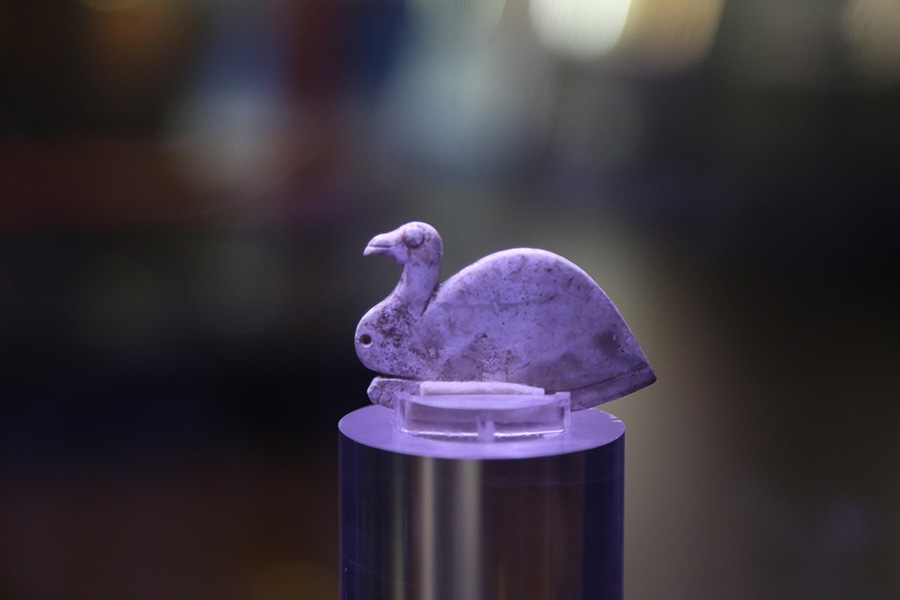 |
|
The Yinxu Museum in Anyang, Henan province, exhibits not only a huge oracle-bone collection but also such items as an impressive array of bronze ware and jade artifacts. [Photo by Will Wain-Williams/China Daily] |
A museum displacing much of what has been unearthed from the tombs is attached to Yinxu, or the Ruins of Yin.
It exhibits not only a huge oracle-bone collection but also an impressive array of bronze ware from around the country.
Bronze work was already incredibly developed by the Shang Dynasty.
The museum displays such items as ordinary cookware and large ceremonial urns with three legs sometimes used in rituals to venerate ancestors.
They're not only big but also show a quality of craftsmanship and detail that suggests they were created by an advanced culture.
Visitors can enter some Shang tombs. Of note is the final resting place of queen and general Fu Hao, the only discovered grave from the dynasty that hasn't fallen prey to theft.
Archeologists discovered hundreds of jade and bronze artifacts, and the skeletons of several animal and human sacrifices inside.
The bones of other human and animal offerings can be seen in a hall that shows several of the earliest chariots found in the country, interred with horses and drivers.
Visiting Anyang, and particularly the Ruins of Yin, offers a fascinating look into the early stage of Chinese culture.
The Shang Dynasty was the time when the basics of the Chinese civilization that has continued until today were forged-writing, philosophy, ancestor worship and fortunetelling.
It offers a view into the country's past that helps visitors understand its present.